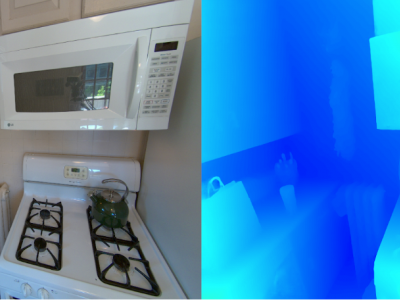stereo

Due to the difficulty in obtaining real samples and ground truth, the generalization performance and the fine-tuned performance are critical for the feasibility of stereo matching methods in real-world applications. However, the diverse datasets exhibit substantial discrepancies in disparity distribution and density, thus presenting a formidable challenge to the generalization and fine-tuning of the model.
- Categories:
 26 Views
26 ViewsWe present a passive stereo depth system that produces dense and accurate point clouds optimized for human environments, including dark, textureless, thin, reflective and specular surfaces and objects, at 2560x2048 resolution, with 384 disparities, in 30 ms. The system consists of an algorithm combining learned stereo matching with engineered filtering, a training and data-mixing methodology, and a sensor hardware design. Our architecture is 15x faster than approaches that perform similarly on the Middlebury and Flying Things Stereo Benchmarks.
- Categories:
 141 Views
141 ViewsThis dataset extends the Urban Semantic 3D (US3D) dataset developed and first released for the 2019 IEEE GRSS Data Fusion Contest (DFC19). We provide additional geographic tiles to supplement the DFC19 training data and also new data for each tile to enable training and validation of models to predict geocentric pose, defined as an object's height above ground and orientation with respect to gravity. We also add to the DFC19 data from Jacksonville, Florida and Omaha, Nebraska with new geographic tiles from Atlanta, Georgia.
- Categories:
 11442 Views
11442 Views
